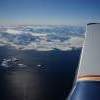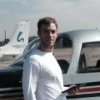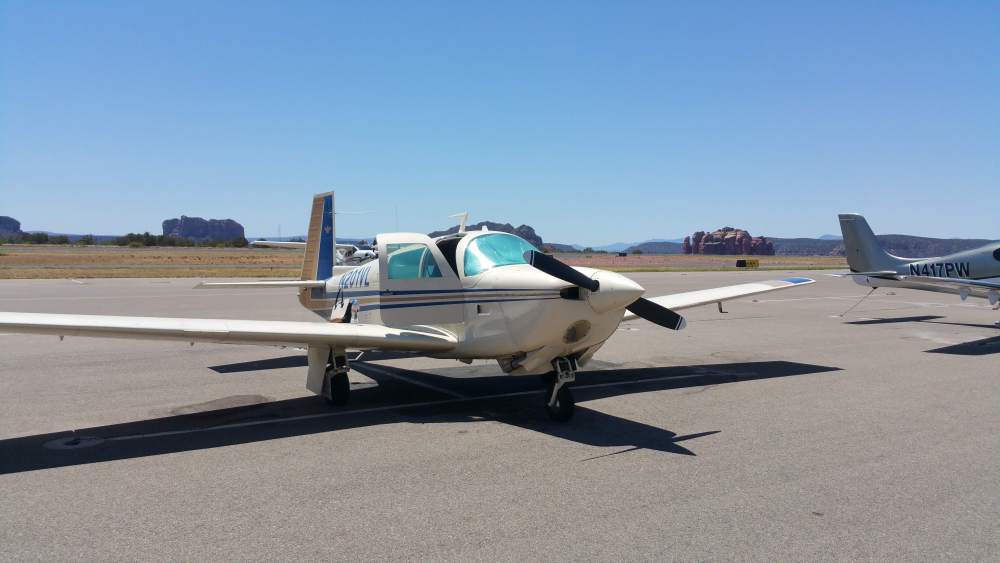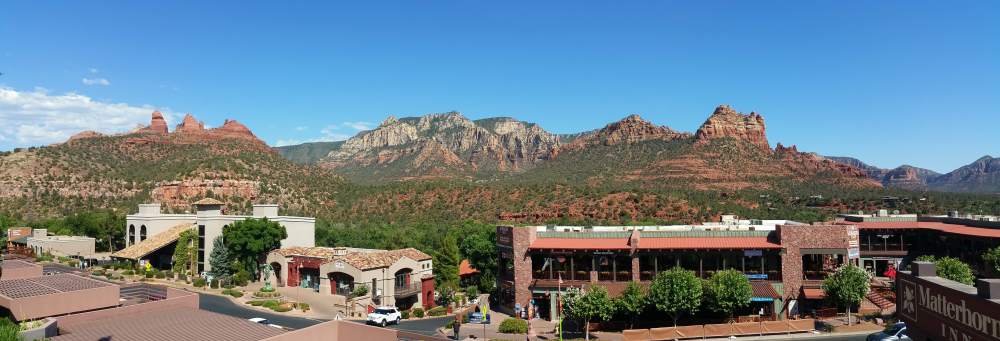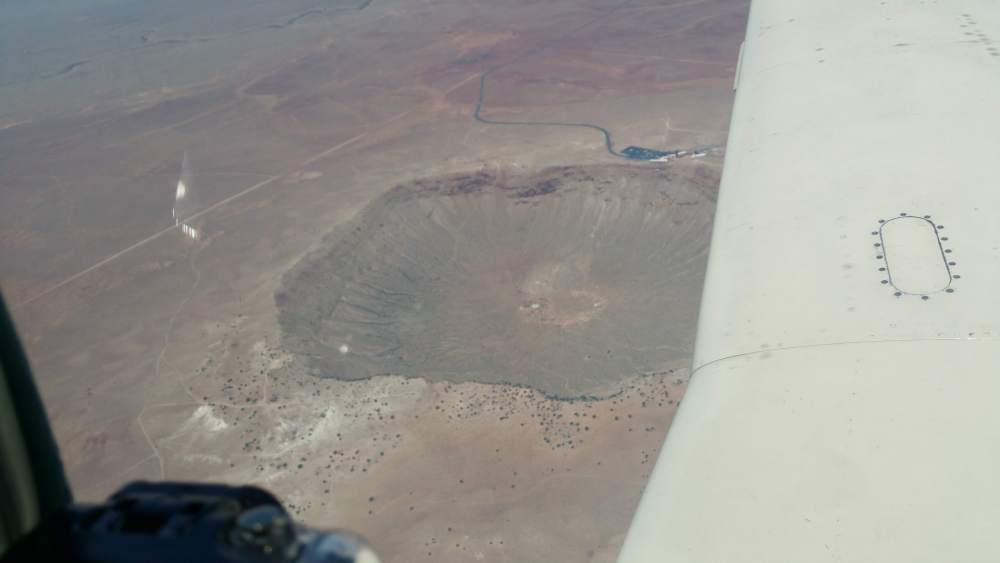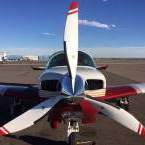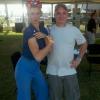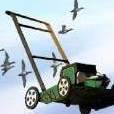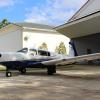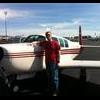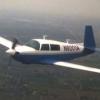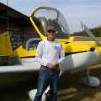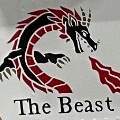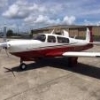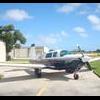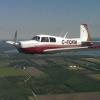Leaderboard
Popular Content
Showing content with the highest reputation on 07/14/2018 in all areas
-
I check my CC bills: ~$4k for the trip. $2.7k for avgas, $350 for two nights (aibnb in Iqaluit, airport hotel in Reykjavik), $600 for landing and handling fees, rest for food, skydemon subscription, etc. I already own a raft, dry diving suit, ELT transmitter, portable radio etc. No expenses for renting. I know you can get a 1st class commercial ticket for that money ... I currently have two residencies, one in the US and one in Germany. I am looking forward to flying in Europe this summer and will eventually fly the Mooney back to the US next year3 points
-
I did this trip before GPS or Loran C in a Meyers 200. The Loran available at that time required a big screen with LOP lines so went without. I did find out that the place to learn to use the ADF is not 800 miles from Frobisher in a snow storm. As most of you know the terrain in that area precludes any sort of landing. The Meyers had 80 gallons and I had a 55 gallon drum in the back seat which was also my means of floating in case of water landing. Used a trailing wire antenna with HF which failed as soon as left Frobisher en-route Godthab. In those days avionics were not as reliable as today. Frobisher to Kef in Iceland took a day but they did not permit leaving the airport building so slept in a chair. Next morning they presented a file with all the weather etc which I was billed a few hundred dollars after arriving home. From there is was about 1300 miles to Biggen Hill if I remember correctly. In Iceland I met a young Lady that was going the other way with passengers in a Mooney. She ferried planes on that route for Mooney factory. Her extra fuel was a small tank in the baggage compartment. No more than 5 or 10 gallons. I had a raft, dry suit, rifle survival rations etc. When leaving Gatwick on the way home I had the rifle under my arm walking around the airport. I ask a Bobbie what to do with it till i left. He suggested Left baggage to check it. They were full so i carried it for few hours till the plane left. I also carried it into the airliner and put it in the overhead bins. HMMMMM things have sure changed.3 points
-
This isn't a question but rather a reminder to other owners to check your nose gear before flight if your FBO tows the plane. Before I bought my M20K I read somewhere that the limited nose gear rotation made it susceptable to over-torquing by powered towing equipment. So I added it to my list of pre-flight items and made sure to check it often. I also brought it up to the FBO manager so they were aware. I went to fly the plane yesterday and while checking the gear noticed one of the turn stops was broken off. So I retraced the tow path and sure enough found the busted part on the tarmac. Fortunately, the staff quickly admitted the fault and the FBO will be covering the repairs. I bring this up because, had I missed this on the pre-flight, odds are the FBO would have plausible deniability and refused to cover the repair. Just another one of many reasons to perform a proper pre-flight.2 points
-
I learned the box by reading the manual and then playing with the simulator. I kept trying different things ATC could do to me and then played around and until I figured out how to handle it.2 points
-
Bought this J in March, but didn't get a chance to go on a trip until a couple of weeks ago due to work commitments. Flew a triangle in the Southwest: San Diego - Las Vegas - Bryce Canyon - Santa Fe, NM - Sedona, AZ - San Diego. Mod. turbulence on each leg, gusty winds and density altitude landings and departures had me worried that the wife would never want to go on another trip. Fortunately she's now hopelessly addicted to airplane ownership and is itching to go on another trip. Neither of us had been to Bryce Canyon before; jaw dropping views, pictures don't do it justice, and we were both very taken with Santa Fe, and will definitely visit again. Landing in Sedona is a blast, and was my first time landing there in 16 years. Fun route as the longest leg is only about 2 hours. Here are a couple of pictures of our 201 parked up at BCE and SEZ.2 points
-
I can certainly understand the reluctance to do such a flight in a piston single. But personally, I'd do it in a minute and intend to do it one day. Anything can happen, but preparation can mitigate a lot of the risk. I just did 4700 nm in my Mooney with several bits of that over cold water and very inhospitable terrain. We just got home and I'm pretty sure I could refuel and do it again. The airplane never complained once.1 point
-
always top off the tanks and visually check; even if I fuel the plane myself. when it comes to fuel, Trust no one.1 point
-
I have an 85 K model and have run each side dry multiple times (on separate flights) to get an accurate measurement. When I refill to the flapper seat I get 33.8-34 gallons in the tank. I know this doesn’t count legally useable fuel but I know pretty close to when the actual level flight fuel exhaustion will happen. I can get more in by being patient but have the extended tanks and have never filled right to the top as I can easily get the fuel I need with the extended tanks. I have also checked my low fuel level and I run out in the 2.5-3 gal range after the light comes on.1 point
-
You will need to install it as a major (337) IAW Bendix King install manual , IAW 43.13 yaddah yaddah yaddah…. It will need an IA signoff1 point
-
Years ago I had a video (VHS, so probably about 1990) made by 3 guys who flew their F model from Detroit to Ireland and back. The video showed what they carried—raft, vests, food, rifle, axe, tent, sleeping bags etc. They also carried 10 gallons of gasoline in containers on one leg, which they added at a stop where no gasoline was available. They had HF Radio — a ham transceiver and a trailing wire antenna crafted using a fishing reel in the hat shelf. Nowhere did they mention weight. Their approach into BGBW was featured. It was overcast as they flew the back ADF approach (with no radar surveillance and ~25 degrees of magnetic variation) up the fjord. The pilot can be heard muttering “holy shit” several times. They made it, both ways. It was fun to watch.1 point
-
advice from a person who has done it......don't do it. my route was from goose or gander to Iceland (so long ago I can't remember) and then down to Europe. This is what multi engine turbine airplanes are for. More engines the better.1 point
-
1 point
-
The plane's log books were approved. I will be dropping off the Bravo on the way to Oshkosh. I hope that Garmin will interface the GFC500 with other products in the future. Being stuck with the G5 set up only is are hard discussion, but I was not planning on upgrading my avionics anytime soon, so I think it will work out for me. The second G5 is not included because it is not needed for certification. They have offered to install another G5 for the cost of the unit. I will do that. It still seems like a good deal for me since I wasn't planning any upgrades and I didn't have any trips planned this year except for Oshkosh. Rental car from Kansas and hotel now for Oshkosh.1 point
-
I may have missed a baggage comment in this thread, so apologies if I’m making a redundant comment. Although it’s Very rare that I have any back seat passengers, we need the extra 10 inches for our stuff while we travel. I only install the back seats for sightseeing passengers but leave the seats out almost always. We travel with road bikes (wheels removed) and camping equipment. No way we’d be able to stuff it all into a short body. That may or may not be a consideration depending on what your plans are.1 point
-
I've been slacking on posting on MooneySpace lately, but I will be at OSH this year and would like to attend. A friend's flying in with me, so it'll be me + 1. He's a Cherokee-owner so everyone can feel free to make fun of him. Thanks!1 point
-
I just did a crossing from Chicago to Germany through the northern route. Updates on gas prices and insurance: Airports with avgas and paved runways in northern Ontario and Quebec: CYMO, CYGL, CYKL, CYYR, CYVP. Iqaluit sells a 52 US GAL barrel for ~CAN $450. After that fun starts: Sondrestrom and Reykjavik were around EUR 3/liter, UK and Germany EUR 2.50/liter. Ouch. If you are planning to stay in EU for a longer time, keeping your US insurance and an insurance from an EU underwriter in parallel is an option. US underwriters cover usually NA, EU underwriters offer global coverage w/o NA. No minimum ferry flight experience required.1 point
-
My now-16 yo son has gone since 2006, and his now-19 yo sis since 2008. They're far from the only kids who've "grown up" in the Caravan and at OSH. My daughter did Women Soar, an amazing program for high school girls, and there is the museum, seaplane base, KidVenture, the drone, ultralight, and college recruiting areas...as long as they have a phone and a charger (gotta learn the places to recharge), I honestly cannot think of a safer place for teens to hang out in America today than AirVenture. And if they self-identify and leave their Caravan nameplates on, they'll have friends wherever they go.1 point
-
Had one complete engine failure while flying. 70 Hours on a new engine and fuel pressure line from the distributor to a bulkhead fitting on the firewall came off. Went from rough to nothing in maybe 15 seconds. The previous week was a trip to Pittstown Point. Mechanic shot. Twice. Early morning, dark, I had a magneto that was not tight, slip causing some funky timing. Did this 2-300 feet off the runway. Must have either looked or sounded pretty intense as CLT tower cleared me to land any runway without my saying a word. Engine just had magnetos timed. Mechanic beaten. Had a cylinder remove itself from the crankcase one night between the runway and hangar after a trip to and from MGM. A few hundred hours before, the same cylinder was removed to replace a broken exhaust stud. No other cylinder was ever off that engine. Wonder if that was more than coincidence. About 1950 hours on that engine. Had a valve stick and bend a pushrod bad enough the pushrod tube broke and was dumping oil. Pushing the plane back after a trip home from LAL I looked down and wondered who spilled a quart of oil in front of my hangar. Oh, it's me. It was down to 5 quarts from 12. About 800 hours on that engine. Sometimes stuff just happens. So, I have become a little suspicious of work done on my airplanes.1 point
-
1 point
-
@skydvrboy, I shared your concern last year with my then 14yr old daughter, I was worried that she'd want to leave half way through the week. She likes aviation, but she doesn't "LIKE" aviation. She made it 7 days until we left on Sunday and she actually shed a few tears as we took off. She has been planning this year's return since that day and has a couple of friends from last year meeting her again this year, she is also communicating regularly with KP's daughter who will be attending for the first time this year. She was allowed to venture off on her own with strict times and places to meet after we had the lay of the land. He'll do just fine, there will be enough distractions around to keep him entertained. Ron1 point
-
Given the equipment and fuel required, I’m guessing an extra pilot along for the ride may not be welcomed. Life raft Ferry tanks Spares,tools Fuel alone will eat up 600+ lbs Captain 200 lbs You are left with less than 200 lbs for everything else,.1 point
-
1 point
-
Reviving an old thread here... Do people do these trips often? And do people seek company from curious individuals in the community. I figured it would always be nice to have another pilot on board. If so, I have lots of spare time this summer and would love to take a trip like this to learn more about it. Maybe I will work up to doing it myself one day. If anyone knows anyone....1 point
-
1 point
-
yes. I had a few upsetting experiences from the Mooney Service Centers (missing nut when replacing aileron bell crank, no cotter pin on main gear, and several more) that now I'm the only one who wrenches on my plane. I have a friend who is a Mooney owner and IA who does the inspection and I do the wrenching. Its a bit like packing your own chute. -Robert1 point
-
1 point
-
If you retire in a nice place, with a great climate, and lots of recreation opportunities, the kids will come to you.1 point
-
Yep, correct. One way to do it with a GoPro is to put a Neutral Density Filter on the camera. They are easy to find on Amazon for a few bucks. It will take the prop out of the picture or solve the black bands on the screens.1 point
-
Chris, either your cat has a serious medical condition or you did a nice job litter-box training your plane.1 point
-
And out of left field.... We live 10 minutes from the airport, and have everything you've mentioned except Southeastern US, in of all places.... wait for it.... St Louis MO. Actually St Charles MO, a suburb of St Louis. We're 3 hours from the Gulf beaches in our TLS/Bravo, and not much further to anything else east of the Rockies. Summers are a bit hot and humid, but winters are fairly short and avoidable by a 3 hour flight to the Gulf beaches. Maybe not perfection, but certainly a place to consider. We really like it here and are planning to stay. Cheers, Rick1 point
-
1 point
-
That survey is really meaningless, as has been noted, because you don't have any understanding of the responses or the respondents, e.g.: What type of engine - single or multi? Turbine or Piston? What type of pilot? How many hours, per year or total? Commercial or private? What type or "failure"? Total, or partial? If I had an engine stumble on takeoff due to carb icing (my only incident) would that be a failure? It does serve to remind you, as has also been noted, that you have to be prepared for this type of event, even though it may never actually happen to you.1 point
-
I've replaced all 4 of my seat tracks on my K. The right side co-pilot was the side that was worn the most and prompted replacing them, but I do most of my flying from the right seat too. They wear out identically to the Cessna seat tracks, and essentially the same material as the Cessna tracks, but we don't have the same AD requiring them to be replaced like the Cessna's. Its a big job, made bigger with the electric gear actuator in the way too. I also replaced the seat roller with the LASAR rollers too at the same time. Huge improvement!1 point
-
I think the biggest problem is if the rollers stop rolling from decades of lack of lubrication and cleaning. They will rapidly wear the rails if they are sliding instead of rolling. Eventually there enough wear that the bottom of the seat roller brackets starts to rub on the bottom of the rails and the seats are almost impossible to move. New rollers will usually fix it.1 point
-
@201er likely knows as much and has more fuel management experience in Mooneys than anyone I know. And I'm in complete agreement with him on fuel management. Unusable fuel is meaningless to me and I'm not about to take published numbers as fact when I'm sitting in the left seat at 12,000 or any other altitude. I'd like to know, and the only way to know is to periodically run a tank dry at altitude, in cruise and use that to accurately measure useable fuel and verify fuel flow, K value, etc. I would never be in the pattern or maneuvering on an approach within +/- 2 or 3 gallons of useable fuel in my active tank. So if useable is different in straight & level vs maneuvering, is meaningless. Knowing the useable fuel in each tank allows me the luxury of flying further in cruise and arriving with more fuel in the selected tank on approach to my destination. I would rather have a 3 to 5 gallon cushion in my selected tank on approach rather than a 1 or 2 gallon cushion in each tank. I can only have one tank selected at a time and don't intend to be switching tanks in the landing environment anyway. A landing with an hour fuel reserve is actually a lot less than an hour if it's split between two tanks and I'm not 100% sure I know the actual useful capacity of each tank. But landing with an hour fuel reserve all in my selected tank gives me much more comfort. Switching tanks based on fuel burned is more accurate and the math is easier, than switching tanks based on time. Only switch tanks at altitude in cruise. I'll typically switch to my fullest (landing) tank at top of decent. It would appear from accident studies, that the risk associated with mismanaging fuel and running out is a much, much, higher than the risk of the engine not restarting after running a tank dry at altitude. Typically the first item on any Emergency Checklist for engine out is to switch tanks. Periodically running a tank dry ensures that you will always immediately recognize the effects of fuel starvation and that your instinctual reaction is to switch tanks. Personal minimums are real and important for any pilot. And my personal minimums on fuel at destination are likely as conservative as anyone. The only difference is I like to KNOW where the fuel is and how much is useable. 10 gallons all together in a single tank is much more useful than the last 5 gallons sloshing around in each tank. So if my personal minimums for a VFR flight was 10 gallons, an additional 2 - 5 gallons in the other tank doesn't help me at all. It just means that my personal minimums are actually 15 gallons, 5 of which are useless. I like to go far in my Mooney. And useful load is always an issue. So while fuel is critically important, landing with an extra 3 or 4 gallons in the un-selected tank doesn't provide any safety and takes away from range and useful load. *Rant off Planning KBXM > KHYI tomorrow...1 point
-
Unusable fuel is about as useful to me as the length of the crossing runway at the airport I took off from.1 point
-
Well the first $800K they raise has to go directly into Mark Baker's bank account... so it takes awhile to raise enough to start giving hat's away.1 point
-
In normal owner language; - tugs that elevate the front wheel won't rotate it and should be fine (at least the ones I have seen used) - the damage is caused by rotating the nose wheel too far. If they can put a tow bar on the nose wheel, they have the potential to turn it too far. This goes for the tow bars that slide into the opening or those that clamp on the holes. - some owners have used a lock-out to prevent putting a tow bar on them. Anthony's point is that they may try some other way to move it. - the foam approach will probably not do anything. Not sure if anyone has tried it. If I leave my plane at an FBO, I clearly ask where I can park the plane so that it doesn't get moved all the whole time I am there. I also use a laminated card I attached to the nose wheel stating "Do Not Tow, call XXX-XXX-XXXX if you need to move this plane". -- I did that after an FBO damaged a truss. Sent from my iPad using Tapatalk1 point
-
I'm planning this trip for sometime soon, taking an M20E back home to Europe. Probably leave soon after Oshkosh. Insurance - you will need to meet European legal minimum liability insurance requirements. The quote from my US insurer was an additional $1000 premium. This covered me to make the ferry flight. The European insurer that I will use charged a much lower amount, but required a pilot on board who had done 5 single engine Atlantic crossings. I'm taking a friend with me who has done about 300 at the last count, so I'm going with the European proposal. Routing. The route that piloto suggests (Goose Bay to Narsarsuaq) requires HF radio (it is a requirement for the whole of the Gander Oceanic control area, at altitudes below 25,000ft). I am told by several ferry pilot friends that the Canadians police this requirement. The non-HF routing is via Iqualuit (CYFB) then Sondrestromfjord (BGSF) then to Reykjavik - with a stop between the last two if you feel like it at Kulusuk, on the East coast of Greenland (BGKK). This routing is a bit further, but it is legal without HF, the legs are much shorter and it gives you more options. Flying Goose Bay to Narsarsuaq, an alternate is likely to be a long way off, and fuel planning becomes critical. CYFB to BGSF is 487nm, and there are reachable airports to the North and South - or a return to Iqualuit is feasible. Customs. You might get away without it, but you would be well advised to get a customs broker in Europe to give you a T1 form for your aircraft, showing that it is in transit in Europe and will be returning to the US. This shows that you don't have to pay sales tax on the aircraft. Some European customs officers are a bit zealous, and a ramp check without the appropriate paperwork would be very tedious. To be legal for IFR in Europe, you should have a DME. And there are lots of approaches that allegedly require an ADF. IFR flightplans must comply with the European routing computer's idea of sensible routes... which are anything but. A (free) subscription to www.eurofpl.eu (great site created by an American ferry pilot) will solve the routing problems. Have fun!1 point
-
I had a flatbed seat to and from Paris on a 747 and still couldn't sleep.1 point
-
Fuel in Canada is $8 a gallon in the southern regions. Would be surprised if it is below $10 a gallon up north. Pleas recompute! Yves1 point
-
1 point
-
Assuming in an Ovation or Acclaim with 130 gals. One day to CYYR or CYYT, one day to BIRK or LPAZ, one day to Europe. Total fuel one way 300 gals. At $13/gal = $3900. Fees about $300. Round trip about 7 days and $8500. Coming back to the US you may have to stop at BGBW due to winds. The Acclaims offers no real advantage over the Ovation since you have to throttle back to get 1800nm range. The Ovation has the advantage of more flexibility on leaning because no need to worry about exceeding TIT. On these trips speed is not the issue but fuel efficiency. Prevailing winds in the North Atlantic are from the west so coming back via LPAZ will require a ferry tank. Flores LPFL in the Azores has no AVGAS. In the event that you encounter strong headwinds best option is to fly low at about 3,000feet, better than swiming. ALWAYS CHECK WINDS BEFORE DEPARTING. José1 point
-
Your math is right on the money, although still low. You need to consider higher fuel prices in europe, insurance, hotels, etc. But ... who said we fly because it makes sense financially... Oscar1 point
-
But this is an English only forum and instead you should use the word "kohones" like in "Holly Kohones" José1 point
-
1 point
-
Mike, We're going to need another poll... Have you ever or do you intend to...cross the pond. Best regards, -a-1 point
-
LECU is my favorite GA airport in Madrid. BTW the two twins that tried to do the crossing before Lindbergh were lost but Lindbergh made it in a single. Amelia Earhart successfully crossed the Atlantic on a single but was lost over the Pacific on a twin (no cajones). The Apollo 11 Moon space ship was a single engine rocket and so was the Lander Eagle. So you need bigger cajones to go to the Moon on a single. And capt. Sully had to ditch his twin on the Hudson (No cajones grandes) because a couple of birds hit it. While a Mooney all may have is blood stains from the birds. Conclusion single pilots have bigger cajones than twin pilots. José1 point
-
0 points

